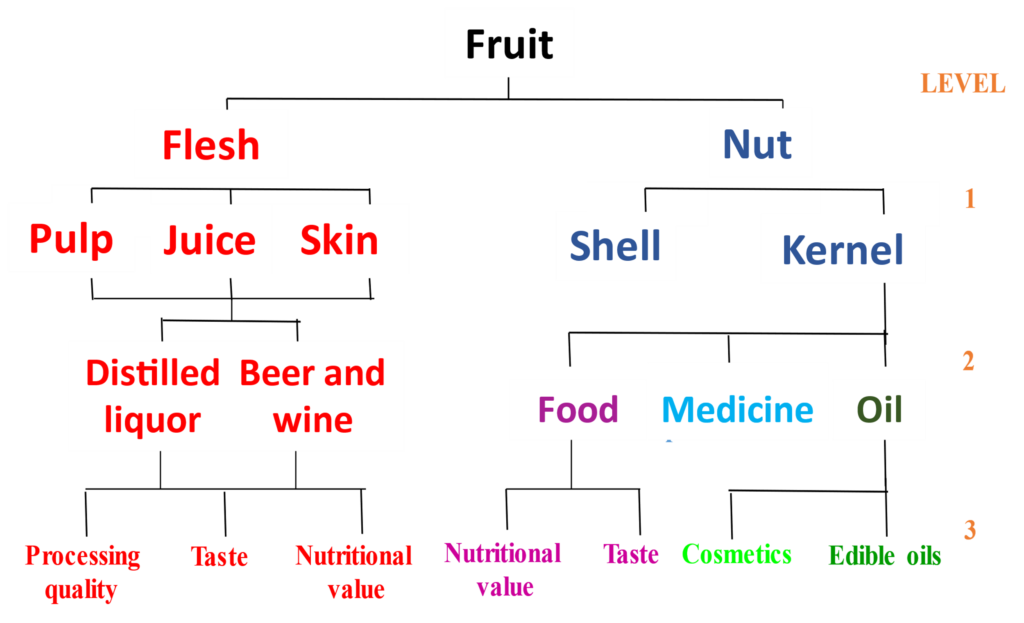By Roger R.B. Leakey
Africa’s agriculture is not delivering freedom from hunger, malnutrition or poverty and is associated with serious deforestation, land degradation and a substantial contribution to climate change.
All these unwanted issues are manifested in the ‘yield gaps’ of staple food crops, as well in the underperformance of many cash crops. An initiative, which promotes the domestication of new tree crops developed from the wild and indigenous trees found all around the continent, is offering a sustainable solution to these problems.
These trees produce a wide range of edible fruits, nuts and leaves, as well as a cornucopia of useful traditional medicines, which are traded as raw products in informal markets. Now
they are being recognised as having far greater social and economic potential following some genetic selection and processing and packaging. To maximise this potential, research in 34 African countries is underway to seek elite individual trees in the wild population and to propagate them as new crops using vegetative propagation. This process is using well known horticultural techniques that have been used for millennia to domesticate the common tree crops with which we are very familiar, species like citrus, mango, and avocado. Much of this work is being done in local communities, rather than at research organisations, to ensure that the benefits flow to the farming communities who are suffering from hunger, malnutrition and extreme poverty. The importance of this approach is that these new tree crops diversify farming systems,
making them more productive and ecologically and environmentally much more sustainable while at the same time generating farm income and creating new business opportunities for the local population. This has been described as “Land Maxing” and is aimed at rebooting tropical agriculture by reversing the degradation of natural, social and human capital. The ‘trick’ in all this is to recognise, understand and utilise the ‘green gold’ that lurks unseen within all these wild tree species.
It lies in the tree-to-tree genetic variation found in all these wild tree species. We need to appreciate that the population genetics of trees is very similar to that found within us – Homo sapiens. We are, of course, familiar with the fact there are genetic differences between human races, tribes and families, and that within all this variation no two people are the same (except in
the case of identical twins). Children are not genetic copies of either of their parents, and siblings in the progeny are also different from each other – often very different. Basically, the same is true of trees although we may not be used to observing it.
Individual elite trees are not superior for all characteristics. Therefore, selection should be based on trees that are superior in all the characters needed by a particular crop or its market. Based on an understanding of this amazing and apparently infinite treeto-tree variation, I mentioned earlier that the domestication process involves the selection of elite individuals in our wild tree populations.
This means identifying the individual trees with the biggest and tastiest fruits and/or nuts; or perhaps leaves, as food crops. Alternatively, there is the potential to select those with the biochemical ingredients needed to confer the greatest medicinal powers as new pharmaceuticals. The trees with the best fruits will not usually be those with the best nuts and almost certainly
will not be those producing the best leafy vegetables or the best medicines. Earlier, I described this process as the identification of ‘ideotypes’ – the ideal individuals. This is the stepping stone to a domestication process which can result in a large number of new crop varieties.
Interestingly, we find that it is possible to develop new and very different crop varieties even within a single species. This concept of an ideotype is not new and has for example been applied to Brassica oleracea to produce cabbages, brussels sprouts, kale, broccoli and cauliflower varieties.
Furthermore, it is something we all do when selecting a spouse! At the first level we know what visible characteristics we like in terms of shape and size, then at the next level we choose characteristics which are not immediately visible, such as personality and intelligence. Then at the third level when seeking our ideal partner, we consider the interests and attitudes to life that best fit our desires. These tree levels of selection are equally relevant to developing a new crop. Progressing
from appearance to phytochemical ingredients (such as fatty acids, essential oils, bioactive products) at each successive level the suitability of the chosen selection criteria become more and more specific for the development of a new market or processing industry.
To conclude, there is the potential to utilise the enormous amount of untapped genetic variation in indigenous species that have not yet been domesticated as crops. This potential is massive and far beyond the dreams of most people.
I suggest that this is the ‘green gold’ that is available to revolutionise African agriculture. I have explained elsewhere that to benefit from all this there is a need for politicians and decision makers in government and in business to recognise that Africa needs to seek its own solutions to the big issues facing the continent because ‘African Lives Matter’. I see the ‘green gold’ as Africa’s chance to implement its own agricultural initiative, one that could bring about real change on the continent.

